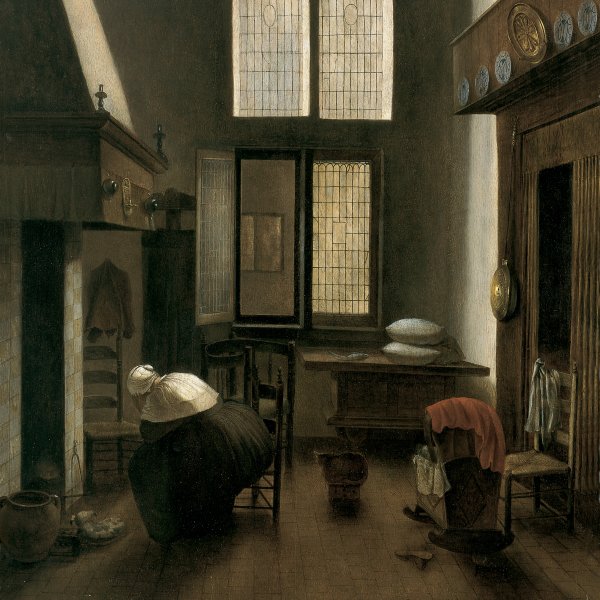Jacobus Vrel
Nothing is known of the life of the artist, who is only recorded through the signatures on some of his paintings. Authors have speculated widely on the location of his activity, suggesting: Gelderland, Friesland, Westphalia, and, given the appearance of Capuchin monks in one of his street scenes (Hartford, Wadsworth Atheneum, inv. no. 167), a small town near the Flemish or German border of the Netherlands where such orders were more likely to appear than in Holland. Remarkably, one of his domestic interiors (Brussels, Musée des Beaux-Arts, inv. no. 2826) even includes a piece of West African sculpture, perhaps indicating a more worldly chapter in Vrel's biography. Given the painter's limited oeuvre (fewer than 40 paintings) and charmingly naïve manner, some viewers have assumed that he was only an amateur or "Sunday" painter. However, the early appearance of two of his works in the inventory of the collection of Archduke Leopold Wilhelm proves that he was well enough regarded in his day to have attracted the attention of the archduke's curator, the renowned Flemish painter David Teniers the Younger. Vrel is often assumed to have been a member of the so-called De Hooch School, but the date on his Interior with a Woman at a Window (Vienna, Kunsthistorisches Museum, inv. no. 6081), is 1654, and proves that he dated paintings four years before any known dates on De Hooch's Delft-style interiors or courtyards.
Vrel painted domestic interiors, courtyards, street scenes and two gothic church interiors. In the past his works have often been misattributed not only to De Hooch, but also to Johannes Vermeer, Isaak Koedijk and Pieter Janssens Elinga.
Peter C. Sutton





